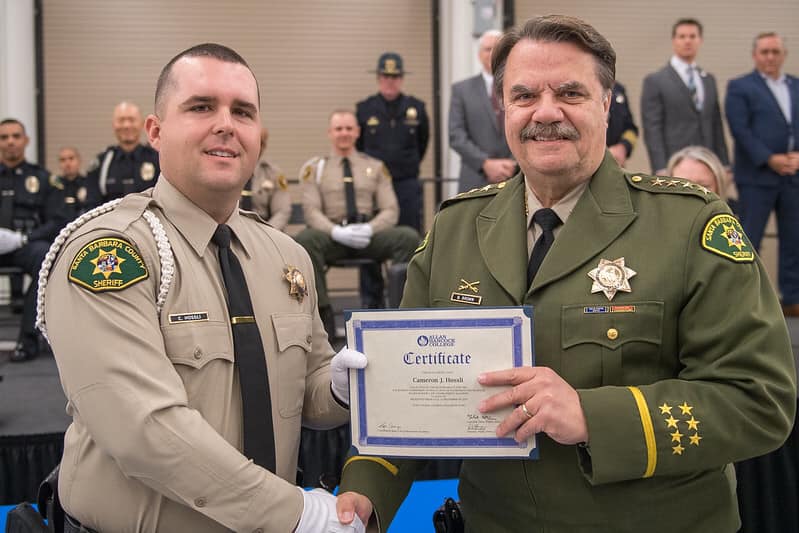Santa Barbara Sheriff Bill Brown questions reversing police tactics
SANTA BARBARA, Calif. - Momentum is growing nationwide to ban neck restraints among America’s police force. Minneapolis, Los Angeles and Santa Barbara are among a growing list of cities calling for the end of the potentially deadly chokehold, stranglehold and other neck restraint techniques in the weeks following George Floyd’s killing.

California Governor Gavin Newsom announced his support last Friday to end training on the "stranglehold" restraint and supports proposed legislation to ban the practice in California. Over the weekend, during a large, student-led protest, Santa Barbara Police Chief Lori Luhnow followed suit.
"I think there's a misconception with the use of words like "chokehold" and "stranglehold" about what the carotid restraint really is," said Santa Barbara County Sheriff Bill Brown.
The sheriff appeared before the Goleta City Council Monday during a small, remote meeting and expressed concern about taking away a “tool in the toolbox” saying a specialized technique known as LVNR -- Lateral Vascular Neck Restraint -- is highly effective during violent encounters.
"It's specifically taught in such a way to do it to not put pressure on the trachea and to not put pressure on someone's windpipe," Brown said. "The reality is it is very, very rarely used, it is something that should only be used as a last resort before the use of deadly force."
The sheriff said he implemented the "last resort" requirement following Floyd's killing.
Sheriff Brown said his staff and colleagues estimate LVNR has been used in the force three times or less in the past five years. It is a tool for law enforcement officers who come up against someone significantly larger and stronger who is violently fighting the officers. Unlike a chokehold, LVNR puts pressure on a person’s carotid arteries and in some cases, blood flow to the brain is cut off and the person loses consciousness.
"It's only utilized as to gain compliance and after compliance is gained it's stopped," Brown said.
According to the National Law Enforcement Training Center, LVNR is a trademarked technique that requires specialized training and certification. Law enforcement, security and military personnel use the technique most.
However, LVNR is not without risk -- even when applied properly. According to the Associated Press, two Indiana police officers were seriously injured during LVNR training last year; one officer suffered a stroke.
"There are risks. There are risks in everything that we do," Brown said. "I think it's important that we not have a knee-jerk reaction to this."
NewsChannel has reached out to the local chapters of the NAACAP for reaction but as of Tuesday evening, had not heard back.
Sheriff Brown believes it would be a mistake to impose the ban without allowing law enforcement to weigh in at the state level and locally.
"It's still a very tender time. It's still a very raw time for people. I think in due course that emotion will die down. I think that there will be the opportunity to reach out to talk to each other to come together and have an understanding and to make things better by working together. That's my hope."
